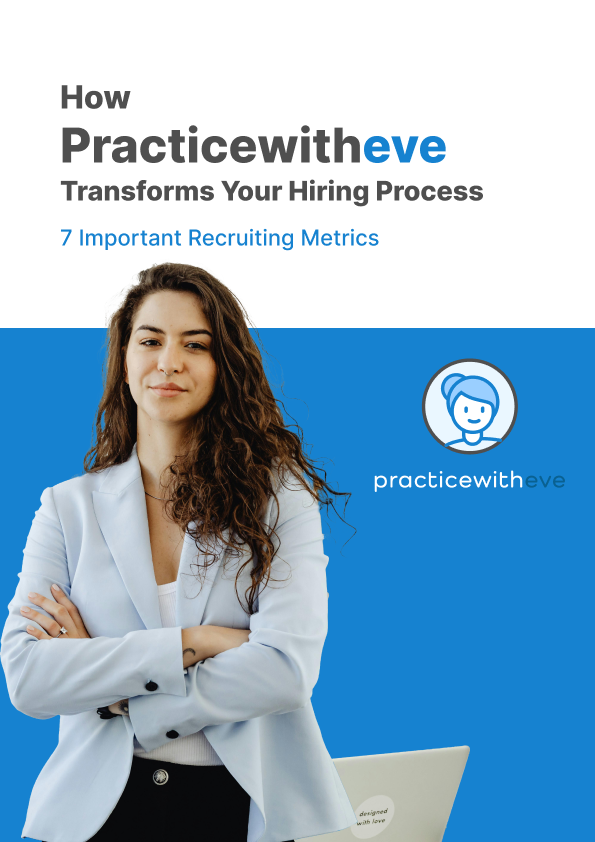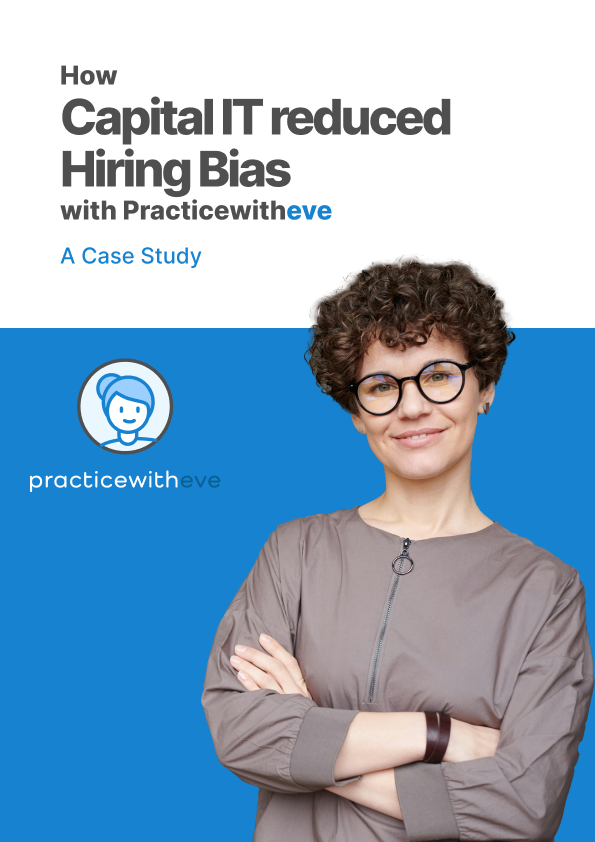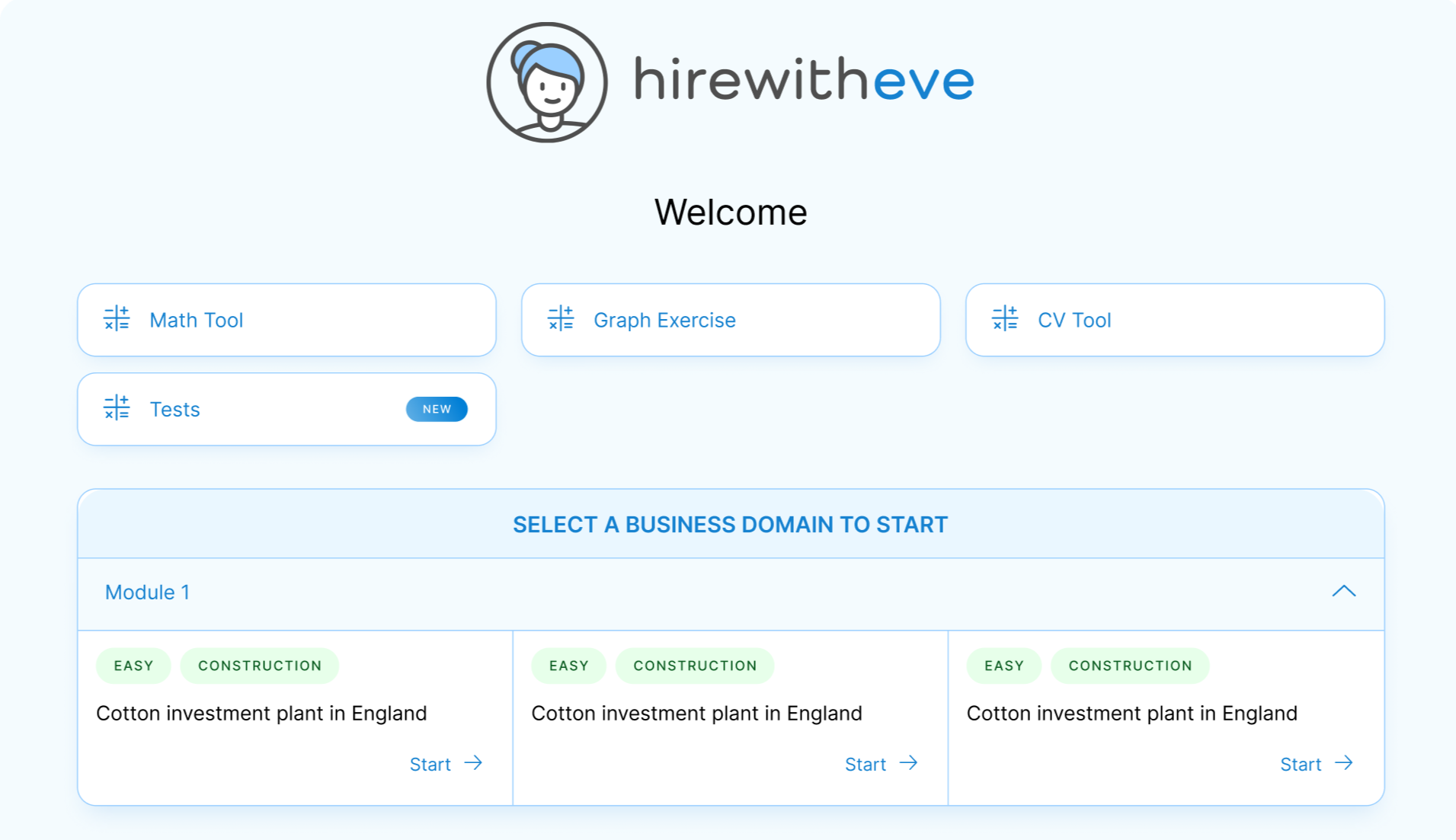Enhancing Employee Retention with Referral Programs & HirewithEve

Share
Employee retention is a critical challenge for HR managers and talent acquisition specialists. One of the most effective strategies to address this challenge is through employee referral programs. These programs not only attract top talent but also enhance employee engagement and loyalty.
In this comprehensive guide, we will explore how to use employee referrals to boost retention, the common pitfalls to avoid, and how HirewithEve can be the perfect software solution for your talent assessment needs.
Table of contents
Introduction
What Are Employee Referrals?
Benefits of Employee Referrals
Common Pitfalls in Employee Referral Programs
Best Practices for Implementing Employee Referral Programs
Enhancing Your Referral Program with HirewithEve
Conclusion
Introduction
Employee referrals have emerged as a powerful recruitment strategy, offering numerous benefits for both employers and employees. However, to maximize these benefits, it is essential to implement referral programs thoughtfully and strategically. This guide will provide HR managers and talent acquisition specialists with the insights needed to leverage employee referrals effectively and introduce HirewithEve as the ideal software solution for talent assessment.
What Are Employee Referrals?
Employee referrals involve leveraging the social and professional networks of your existing employees to source potential candidates. This method, often referred to as network-based hiring, can be formal or informal. Formal employee referral programs (ERPs) are structured with defined processes and often include incentives for successful referrals. Informal referrals occur through word-of-mouth recommendations.
The Popularity of Employee Referrals
According to Radancy’s Employee Referral Benchmark Study 2023, 74% of companies utilize employee referral programs, with 25% generating 15% or more of their hires through referrals. This popularity underscores the effectiveness of employee referrals as a recruitment strategy.
The Mechanics of Employee Referrals
Employee referrals can be as simple as an employee recommending a friend for a job opening. In more structured programs, referrals are made through a company portal, and successful referrals may result in bonuses or other incentives once the new hire completes their probation period.
Benefits of Employee Referrals
Connecting with Best-Fit Candidates
Employee referrals often result in a pool of pre-vetted candidates who are not only skilled but also culturally aligned with the organization. This alignment enhances job satisfaction and retention.
Ola Krawiec, Office Manager at Linkhouse, notes, “Existing employees understand our company culture and are likely to refer individuals who align with these values and work ethics. This cultural alignment often translates into higher job satisfaction and, consequently, longer tenure.”
Building a Positive Workplace Culture
Employee referrals foster a sense of camaraderie and teamwork, contributing to a harmonious work environment. Liftstar GmbH, a Germany-based company, experienced improved recruitment outcomes and a culture of teamwork after implementing a digital referral program.
Making Employees Feel Valued
Research has shown that involving employees in the hiring process makes them feel respected and valued. A study involving a large European grocery store chain found that implementing ERPs led to a 15-20% reduction in employee turnover. This reduction was attributed to existing employees feeling valued and connected to the company’s success.
Building Better Teams
Teams that include referred employees often exhibit better collaboration and performance. A meta-analysis by Ohio State University found that teams with friends performed better than teams with acquaintances or non-friends. Referrals also provide new hires with a familiar face during onboarding, facilitating smoother integration.
Common Pitfalls in Employee Referral Programs
Excessive Reliance on Employee Referrals
While employee referrals are valuable, relying on them exclusively can lead to a lack of diversity. Legal writer Kate Stacey warns that exclusive reliance on referrals can contribute to unconscious bias and potentially exclude candidates from diverse backgrounds. Great Place to Work highlights that diverse workplaces have 5.4 times higher employee retention.
Solution: Use Various Candidate Sources
To mitigate this risk, use a mix of candidate sources, including job boards, networking events, and social media. Additionally, build diversity safeguards into your referral program. For example, Intel doubled its bonus incentives for employees referring women, minorities, or veterans.
Misalignment with Organizational Objectives
Employee referral programs must align with organizational objectives and business strategies. Mitchell Hoffman, Associate Professor of Strategic Management, notes that referral programs should support business goals to avoid counterproductive outcomes.
Solution: Strategically Customize Your Approach
Define your program’s objectives clearly and tailor your incentives accordingly. For instance, if your goal is to improve retention, consider offering incremental referral bonuses for milestones like six-month and one-year anniversaries.
Skipping Hiring Stages
Employee referrals should not replace comprehensive hiring processes. Skipping stages like talent assessments can lead to mis-hires.
Solution: Always Use Talent Assessments
Use objective pre-employment skills testing, personality tests, structured interviews, and job trials to assess candidates thoroughly. This ensures a fair and balanced hiring process.
Viewing Referrals Through Rose-Colored Glasses
Referrals can create a bias towards preferred candidates, leading to potential mis-hires.
Solution: Build Objectivity into Your Hiring Process
Avoid blind resume evaluation. Instead, use talent assessments to evaluate all candidates against objective criteria.
Over-reliance on Monetary Bonuses
Monetary bonuses are common but may not always be the most effective incentive. A study of nurses in Belgium found no significant increase in referral likelihood or quality due to promised bonuses.
Solution: Offer a Rewards Menu
Provide a combination of rewards, such as extra paid time off, gift cards, and public recognition. A digital rewards program can enhance participation and allow employees to choose rewards that best motivate them.
Best Practices for Implementing Employee Referral Programs
Using Various Candidate Sources
Diversify your candidate sourcing to include job boards, social media, and networking events, alongside employee referrals.
Strategically Customizing Your Approach
Align your referral program with organizational goals and tailor incentives to support these goals.
Ensuring Comprehensive Talent Assessments
Implement objective talent assessments to evaluate all candidates fairly and thoroughly.
Building Objectivity into Your Hiring Process
Avoid biases by using talent assessments and structured interviews to assess candidates’ skills and fit.
Offering a Rewards Menu
Create a rewards menu with various incentives to motivate employees and increase participation in referral programs.
Enhancing Your Referral Program with HirewithEve
Comprehensive Talent Assessments
HirewithEve offers a range of talent assessment tools, including pre-employment skills testing and personality assessments, ensuring a thorough evaluation of all candidates.
Objective Candidate Evaluation
The platform’s objective evaluation methods help eliminate biases and ensure that the best candidates are selected based on merit.
Customizable Rewards Programs
HirewithEve allows you to create a customizable rewards menu, offering employees a choice of incentives that best motivate them.
Conclusion
Employee referral programs can significantly enhance employee retention and build a positive workplace culture. However, it is essential to implement these programs thoughtfully, avoiding common pitfalls and using comprehensive talent assessments. HirewithEve provides the tools and solutions needed to optimize your referral program, ensuring you attract and retain the best talent.
By integrating HirewithEve into your referral program, you can leverage the benefits of employee referrals while maintaining a fair and objective hiring process. This comprehensive approach will help you build a loyal and high-performing workforce, driving long-term success for your organization.
Employee referrals are a powerful tool in the HR arsenal, but they must be used wisely and strategically. HirewithEve can be your trusted partner in ensuring that your referral program not only attracts top talent but also fosters employee loyalty and retention. With the right approach and tools, you can transform your recruitment process and achieve your organizational goals.
The best advice in pre- employment testing, in your inbox.
No spam. Unsubscribe at any time.
TARGET YOUR TALENT
Unlock tailored solutions for your recruitment and hiring needs with Eve Platform's extensive case study library.
Free Resources

Transforming Hiring: 7 Key Recruiting Metrics
Enhancing recruitment processes with data-driven insights for better hiring outcomes.

Reducing Hiring Bias with Practicewitheve.
Utilizing Practicewitheve to combat bias and streamline recruitment processes effectively.

Hiring Detail-Oriented Candidates
PracticewithEve enhances hiring by accurately assessing candidate's attention to detail-oriented.








